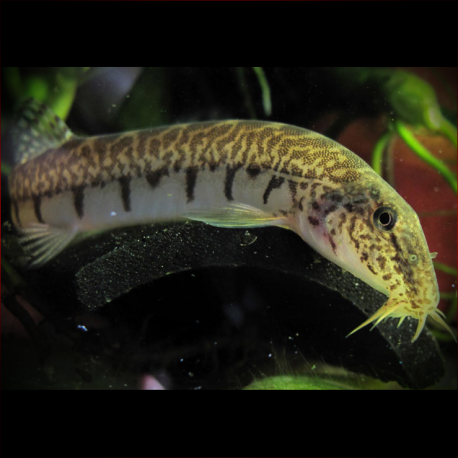More info
Datasheet
| Minimum Tank Size | 90 litres / 23.78 US gallons |
| Maximum Size | 13.0cm / 5.12inches |
| Temperature | 20°C / 68.00°F - 24°C / 75.20°F |
| Hardness | 5.04dgH / 90ppm - 15.02dgH / 268ppm |
| pH | 7.0-8.0 |
General Description
Iksookimia Koreensis, a member of the Cobitidae family, is a peaceful species that coexists well with others in aquariums. Typically a micropredator feeding on chironomid larvae and benthic invertebrates in the wild, this species prefers clean, oxygenated water in its tank. Endemic to Korea, particularly in river drainages of northern and western South Korea, I. koreensis has not been bred in captivity to date.
Aquarium Setup
For optimal care, a tank of at least 90 litres is recommended, with clean, well-oxygenated water and a turnover rate of 10-15 times per hour. The aquarium should include a substrate of gravel, sand, or a mix, along with water-worn rocks, pebbles, and driftwood. Although aquatic plants are not common in their natural habitat, adaptable species like Microsorum, Crinum, and Anubias are suitable. Stable water conditions and regular partial water changes are essential.
Behaviour
I. koreensis is peaceful and thrives in the company of conspecifics. It is best kept in groups of four or more specimens to ensure their well-being. They do not pose a threat to tankmates but may prey on eggs or fry. This species makes a great addition to communities with small, peaceful cyprinids and current-loving loaches. However, territorial or aggressive bottom-dwellers are less suitable companions.
Feeding and Diet
In the aquarium, I. koreensis accepts sinking dried foods but benefits from a varied diet that includes small live and frozen options like Daphnia, Artemia, and bloodworms. A diverse diet is crucial for maintaining the species in optimal health.
Reproduction & Dimorphism
Information on the reproduction of I. koreensis is limited, with presumed seasonal spawning habits in the wild. Mature males can be distinguished by extended first pectoral-fin rays and a thickened lamina circularis at the base of the second ray. Adult females are typically larger and heavier-bodied than males.
Habitat and Distribution
This species prefers small, shallow rivers and streams with moderate to fast currents, characterized by substrates of rocks, sand, and gravel. Riparian vegetation and aquatic plants are generally absent from their habitats, which are found in specific regions of Korea. Clean, oxygen-saturated water supports the development of a biofilm, crucial for their survival in the wild.

